Mount Putuo is a renowned Buddhist mountain and a significant tourist destination in China. It is one of the Four Sacred Buddhist Mountains in China. The mountain is an island - based mountain area that is surrounded by the sea. The beautiful coastal scenery combined with the solemn religious atmosphere makes it a unique place.
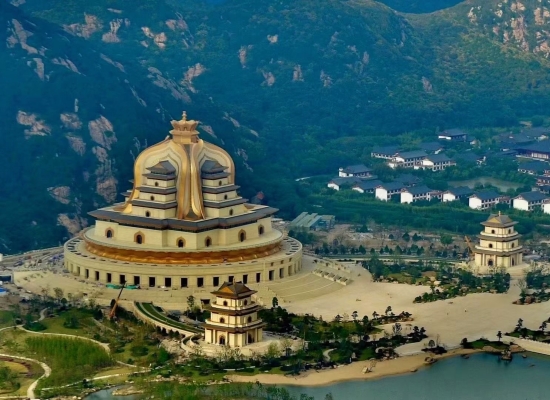
Best Time to Visit: June ~ October
Recommended Visiting Time: 1 ~ 2 days
Opening Time: 06:30 ~ 22:30
Tickets: CNY 160/person (February to November);
CNY 120/person (January and December);
CNY 180/person (first 3~5 days during the 1st, 5th, 10th lunar month)
Address: Zhoushan City, Zhejiang Province, China
Temples
Puji Temple (普济禅寺): It is one of the oldest and largest monasteries on Mount Putuo and also the one with the most flourishing incense on the island.
Fayu Temple(法雨寺): The architecture is magnificent and the layout is exquisite. Its main hall, the Hall of Universal Salvation, is known as the "Nine-Dragon Treasure Hall". The nine-dragon caisson ceiling and some glazed tile components in the hall were relocated from the Ming Dynasty palace in Nanjing, possessing extremely high historical and artistic value.
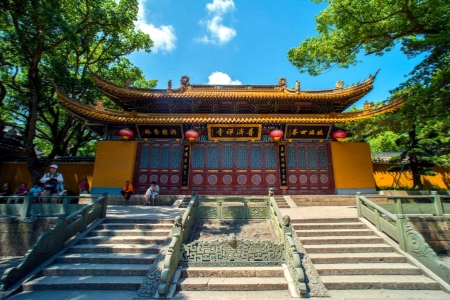
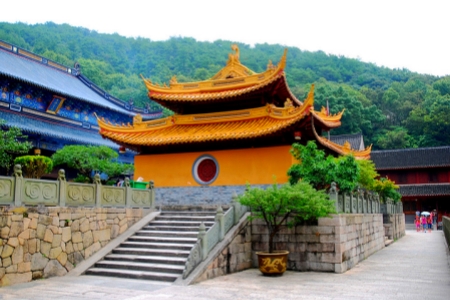
Huiji Temple (惠济禅寺): Located on the top of Buddha Summit Mountain, it is one of the three major temples on Mount Putuo. The architectural style is simple and elegant, and the temple houses many Buddhist cultural relics and artworks.
Not-willing-to-leave Temple (不肯去观音院): It is the earliest Guanyin Dojo on Mount Putuo. Legend has it that the Japanese monk Huie was about to take the Guanyin statue back to Japan. However, when he reached this place, he was blocked by strong winds and waves. He believed that the Guanyin was unwilling to go eastward, so he built a temple here to enshrine it, which has a profound historical and cultural background.
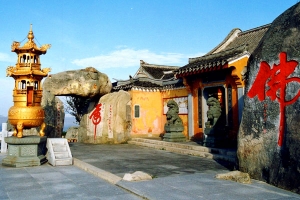
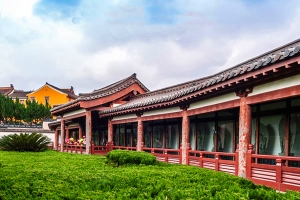
Buddha Statue
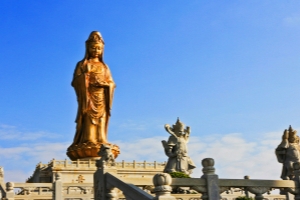
The Statue of the South Sea Guanyin: Standing 33 meters high on the Guanyin Tiao Mountain Ridge at the southern end of Mount Putuo, it is a landmark building of Mount Putuo. The Buddha statue is cast with a new type of imitation gold copper. The face shows a compassionate and serene expression. The left hand holds a Dharma wheel and the right hand makes a gesture of fearlessness, demonstrating the great mercy and the image of saving the suffering of Guanyin Bodhisattva.
Natural Landscape
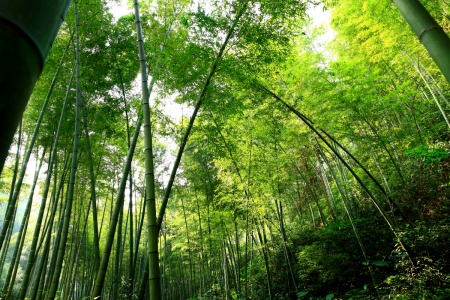
Purple Bamboo Forest: It gets its name because the rocks in the mountain are purplish-red and when cut open, they show patterns similar to cypress leaves and bamboo leaves. It is a place where the Buddhist holy land and the natural beauty complement each other. One can also visit attractions such as the Chaoyin Cave here and experience the uncanny workmanship of nature and the solemn and mysterious Buddhist culture.
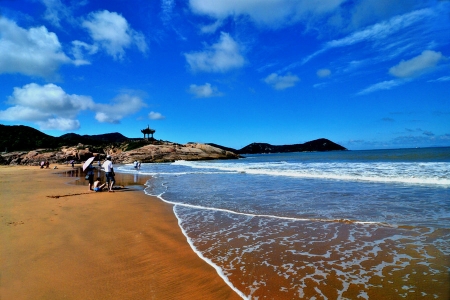
Baibusha and Qianbusha Beaches (千步金沙): They are not only good places to enjoy the sea view and the beach, but also their tranquil and beautiful environment blends well with the Buddhist cultural atmosphere of Mount Putuo, providing a place for people to perceive Zen in nature. According to legend, this is the place where Guanyin Bodhisattva enlightens sentient beings, and the sand and stones on the beach are also endowed with sacred significance.
It attracts a large number of tourists every year. You can not only experience religious and cultural activities but also enjoy the natural beauty of the mountains and the sea. There are well-developed tourist facilities such as hotels, restaurants, and transportation systems to provide convenience for visitors.




































